Aerospace

Where is 'sea level' and how far above sea level is a particular place located?
Quite a lot of things may go wrong in bridge building and the inhabitants of the German and the Swiss parts of Laufenburg were looking forward to a new bridge over the Rhine, the High Rhine Bridge, when they were taken aback by an embarrassing error: The heights of the two bridge parts growing towards each other differed by 54 centimeters.
Someone in the height networks of Switzerland and Germany included the known height difference of 27 centimeters incorrectly into the calculation so that they were…
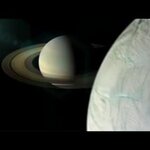
Propylene, a chemical used to make food-storage containers, car bumpers and other consumer products, has been detected on Saturn's moon Titan, the first definitive detection of the plastic ingredient on any moon or planet besides ours.
The propylene was identified in Titan's lower atmosphere by Cassini's Composite Infrared Spectrometer (CIRS), which measures the infrared light emitted from Saturn and its moons in much the same way our hands feel the warmth of a fire.
CIRS can identify a particular gas glowing in the lower layers of the atmosphere from its unique thermal fingerprint. The…
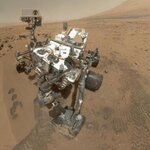
The first scoop of soil analyzed by the analytical suite in the belly of NASA's Curiosity rover reveals that fine materials on the surface of the planet contain several percent water by weight.
Curiosity landed in Gale Crater on the surface of Mars on August 6, 2012, charged with answering the question "Could Mars have once harbored life?" To do that, Curiosity is the first rover on Mars to carry equipment for gathering and processing samples of rock and soil.
One of those instruments was employed in the current research: Sample Analysis at Mars (SAM) includes a gas chromotograph, a…
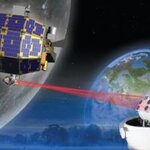
The Lunar Laser Communication Demonstration (LLCD) on the Lunar Atmosphere and Dust Environment Explorer (LADEE) is going to show that two-way laser communication beyond Earth is possible, broadening the possibility of transmitting huge amounts of data.
In the future, this could allow for 3-D High Definition video transmissions from deep space missions back to Earth.
Much of NASA, like many government-controlled science and engineering, is still stuck in 1960s architecture, always creating a new Manhattan Project of X. This technology was instead created by the Massachusetts Institute…

Hot off of revolutionizing ground-based transportation with the electric car company Tesla and proposing to revolutionize slightly-above-the-ground-based transportation with the Jetsons-esque Hyperloop, eccentric billionaire genius Elon Musk (of PayPal fame) appears to believe he has risen above the law.
Or rather, he believes his Space Exploration Technologies Corporation (SpaceX) Grasshopper rocket has risen above the law.
Ok, so the Grasshopper rose, but 250 m is still legally within World Chess Federation jurisdiction.
What was this brazen defiance of international norms? On…

Astronomers have assembled images from more than 13 years of superheated gas - 5,000 light-years long - as it is ejected from a supermassive black hole.
Even in such a cosmically short time frame, it gives us a better understanding of how black holes shape galaxy evolution.
The research team spent eight months analyzing 400 observations from Hubble's Wide Field Planetary Camera 2 and Advanced Camera for Surveys. The observations, taken from 1995 to 2008, are of a black hole sitting in the center of a giant galaxy dubbed M87. M87 resides at the center of the neighboring Virgo cluster of…
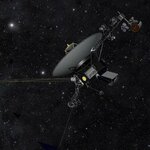
There is no 'you are now exiting the solar system' sign at the entrance to interstellar space, so when, and perhaps if, Voyager 1 left the solar system remains a mystery - but a team says it has definitely happened by now.
Voyager 1, carrying with it Earthly greetings on a gold plated phonograph record, still-operational scientific instruments and the future plot of "Star Trek: The Motion Picture", has traveled farther from Earth than any other human-made object.
But has it left the solar system? NASA says no while a group writing in The Astrophysical Journal Letters says their model of…
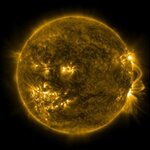
In August 8th, the VERIS rocket is going to launch from the White Sands Test Facility in New Mexico.
VERIS is short for Very high Resolution Imaging Spectrometer and its 15-minute trip will carry an instrument that can measure properties of the structures in the sun's upper atmosphere down to 145 miles across, some eight times clearer than any similar telescope currently in space.
When it comes to observing the sun, different instruments and techniques must be used to study different temperatures of material or different layers of the sun from its surface out into its active upper…
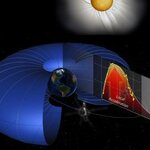
A lingering space mystery has been how electrons within Earth's radiation belt can suddenly become energetic enough to kill orbiting satellites. Thanks to data gathered from a pair of NASA probes roaming the harsh environment of near-Earth space, scientists have found an answer: an internal electron accelerator operating within the Van Allen radiation belts.
Scientists knew that something in space accelerated particles in the radiation belts to more than 99 percent the speed of light but they didn't know what that something was. New results from NASA's Van Allen Probes now show that the…

Voyager 1, launched in 1977, has now traveled further from Earth than any previous launched object - 11 billion miles and counting. It is on the edge of our solar system and about to enter deep interstellar space. Since it is in uncharted air, it's no surprise that it is generating very puzzling and surprising data. Most of the predictions about solar wind, cosmic rays, and magnetic boundaries have turned out to be dead wrong http://www.latimes.com/news/science/la-sci-voyager-heliosphere-20130628,0,6860711.story.
I love the bit about cosmic rays traveling in parallel. Why shouldn't there be…